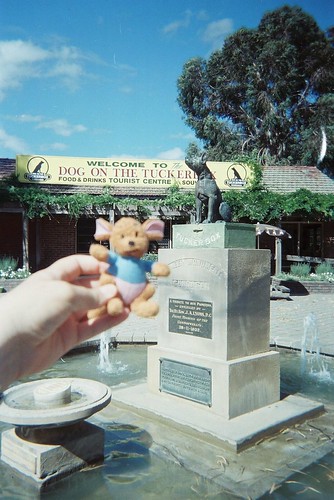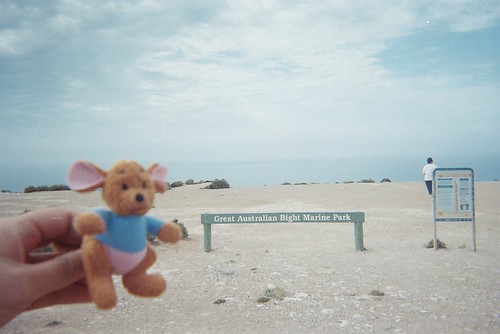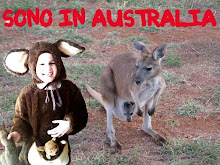
001 Sultan Salahuddin Mosque, Shah Alam
“One of the largest mosques in South-east Asia, this impressive building is frequently referred to as "the blue mosque." It is huge and magnificent--with an enormous, dark blue dome and four minarets standing at 142.3 metres. Decorative Islamic calligraphy enhances the dome and main prayer-hall, while the overall architecture integrates ethnic Malay design elements.”
 31-Jul-08
31-Jul-08 002 View of Putrajaya from Putrajaya International Convention Centre
 3-Aug-08
3-Aug-08 003 Kuala Lumpur Tower (KL Tower)
“Built in 1995, this statuesque tower that reaches an imposing height of 421 meters is currently the fifth tallest in the world.”

004 View of Petronas Twin Towers from KL Tower
 005 Petronas Twin Towers
005 Petronas Twin Towers “At a dizzying height of 452 meters, the Petronas Twin Towers, a pair of 88-story buildings, are the world's tallest twin towers. The designs on the towers are based on geometric patterns common in Islamic architecture.”
 005 (2) Suria KLCC (The shopping mall adjacent to Petronas Twin Towers)
005 (2) Suria KLCC (The shopping mall adjacent to Petronas Twin Towers)
 22-Aug-08
22-Aug-08 006 Petaling Street (Kuala Lumpur Chinatown)
“Chinatown's Petaling Street is one of Kuala Lumpur's most popular tourist destinations. In the evenings, part of the road is closed to traffic and it transforms itself into a bustling night market. A line of stalls come to live in front of the pre-war shops, offering products of every description, from fake leather goods to the obligatory "Dunhill" watches. The area attracts many locals and visitors in search of bargain items, including inexpensive dresses, shoes, fabrics and souvenirs.”
 007 View of Kuala Lumpur Railway Station & KTM Headquarters from Pasar Seni LRT Station
007 View of Kuala Lumpur Railway Station & KTM Headquarters from Pasar Seni LRT Station

008 View of Dayabumi Complex & Kuala Lumpur Post Office from Pasar Seni LRT Station
“When the construction of this complex was completed in 1985, it was labelled the most expensive building ever built in Malaysia. The gleaming white structure was designed in an interesting combination of Arabic and modern high-rise architecture, blending well with the surrounding Moorish and Byzantine architecture. Dayabumi Complex houses government offices, a shopping arcade and the General Post Office.”
 009 In the LRT (Light Rail Train)
009 In the LRT (Light Rail Train)

24-Aug-08
010 Entrance to Tugu Negara (National Monument). You can see Malaysia’s national emblem on the wall.
 011, 012 The National Monument.
011, 012 The National Monument. “Close to Parliament House stands the National Monument--a great bronze sculpture erected to commemorate the soldiers who gave up their lives in the triumph over the Communists. Constructed in 1966, it is reputed to be one of the world's largest free-standing bronze sculptures. Standing 15.54 meters tall, the sculpture was designed by the American sculptor Felix de Weldon and portrays seven men from the Malaysian Armed Forces holding the national flag, each symbolizing one of seven qualities: leadership, unity, strength, vigilance, suffering, courage and sacrifice.”

 013 The Parliament House
013 The Parliament House “Set atop the hill in the scenic Lake Garden (Taman Tasik Perdana) , Parliament House is a symbol of democracy in Malaysia. Officially opened in 1963, the complex accommodates two houses of the Malaysian Parliament, the Dewan Rakyat (House of Representatives) and the Dewan Negara (the Senate). One of the prominent features of the 20-level tower is an open-sided terrace commanding a magnificent view of Kuala Lumpur.”
 014,015 Lake Gardens (Taman Tasik Perdana)
014,015 Lake Gardens (Taman Tasik Perdana) “The brainchild of Alfred Venning, the British State Treasurer in the 1880s, this botanical garden in the heart of Kuala Lumpur is the city dweller's favorite rendezvous retreat. Nestled deep in the city center near Jalan Parlimen are these sprawling green lawns, rolling hills and blooming gardens.”

 016, 017 Eye On Malaysia at Taman Tasik Titiwangsa
016, 017 Eye On Malaysia at Taman Tasik Titiwangsa 

018 Istana Budaya (Palace of Culture)

019 Merdeka Square & Sultan Abdul Samad Building
“The Dataran Merdeka, or Merdeka Sqaure was once a focal point— and cricket pitch—for the British colonial presence in Malaysia. The structures bordering the Dataran Merdeka resemble the physical environment of the colonists' native land. Situated on one corner of the square is the Selangor Club, replicating the Tudors of merry old England. It was at this square in 1957 that the Union Jack was lowered and the Malayan flag hoisted, signaling Malaysia's independence as a nation. A 95-meter flagpole, one of the tallest in the world, marks the spot.”
“Sultan Abdul Samad Building is the distinctive landmark in KL. Moorish in design, this building, completed in 1897, was formerly the seat of the British colonial government. Perhaps the most photographed building in the city, it features a 40-meter clock tower affectionately dubbed "Big Ben", topped with a golden dome and flanked on both sides by two domed towers. During state occasions, colored lights twinkle in the arches, making it look like a scene from an Arabian Nights' tale.”

020 Selangor Club & Bukit Aman Police Headquaters

021 Cathedral of Virgin St Mary & Kuala Lumpur City Hall (back, right)
“Consecrated in February 1895, the church in this early English Gothic-style cathedral was designed by A.C. Norman, and was elevated to the status of cathedral on September 8, 1983. This century-old building is shaped like a cruciform and can accommodate 200 worshipers. It consists of the nave, which has an open, timbered roof and the chancel, which is raised above the nave floor level, paved with tessellated tiles and lit by three stained-glass windows. The Cathedral is situated within walking distance of many interesting historical buildings and sites.”
 022 Dayabumi Complex & Malaysia flag (the 95-meter flagpole, one of the tallest in the world)
022 Dayabumi Complex & Malaysia flag (the 95-meter flagpole, one of the tallest in the world)
 023 Kuala Lumpur Railway Station
023 Kuala Lumpur Railway Station “Built in 1910, this stunning Moorish-style terminal is a delight for photography buffs. It was designed by architect A.B. Hubbock, who also designed the Jamek Mosque. Across the street is the Malayan Railway Building, another Moorish extravagance from the British colonial period. It is linked to the station by an underground thoroughfare.”
 024 KTM (Malayan Railway) Building
024 KTM (Malayan Railway) Building “This building is another fine example of the British colonial adaptation of Moorish architecture. A.B. Hubback's work features arches, domes and minarets, creating a somewhat Byzantine "Arabian Nights" fantasy land. Completed in 1917, it underwent major renovations in 1986. The building is linked to the General Post Office at Dayabumi Complex by an underground thoroughfare. The railway station that used to be housed here has been transferred to the new Kuala Lumpur Central building.”


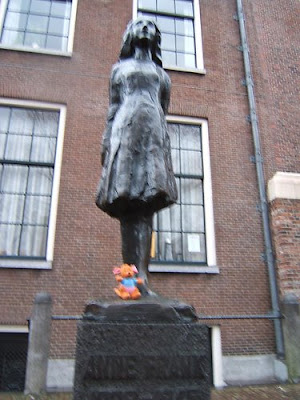










 3-Aug-08
3-Aug-08  005
005  22-Aug-08
22-Aug-08 

 011, 012 The National Monument.
011, 012 The National Monument. 
 013 The Parliament House
013 The Parliament House  014,015
014,015 



 023
023  024 KTM (Malayan Railway) Building
024 KTM (Malayan Railway) Building 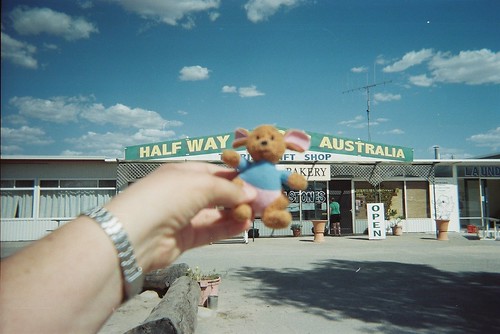
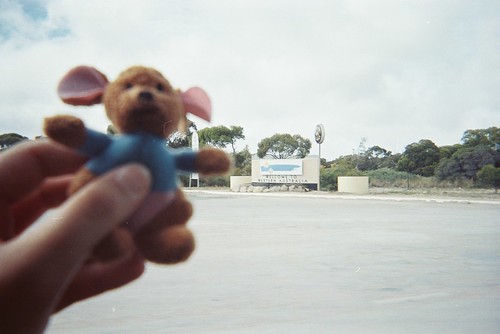
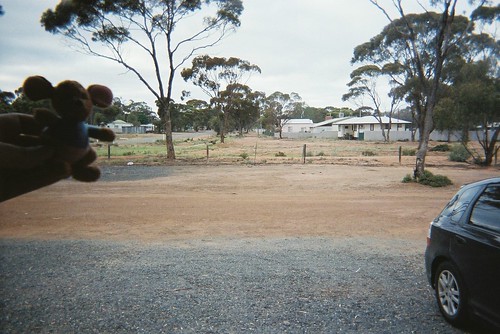 This is an example of a basic outback township. Taken from my hotel room door so the lighting isn't the best. Norseman is a goldmining town in outback Western Australia about 700km from Perth.
This is an example of a basic outback township. Taken from my hotel room door so the lighting isn't the best. Norseman is a goldmining town in outback Western Australia about 700km from Perth. As we crossed the border to South Australia we had to pass through a quarrantine checkpoint to make sure we weren't carrying any fruit, vegetable or plant material. This is to protect crops from fruit fly which hasn't made it to South Australia yet.
As we crossed the border to South Australia we had to pass through a quarrantine checkpoint to make sure we weren't carrying any fruit, vegetable or plant material. This is to protect crops from fruit fly which hasn't made it to South Australia yet. This twisted piece of metal is a piece of the Skylab space station which crashed to earth in Balladonia Western Australia on 12 July 1979. If you look really close you can see the word Skylab on the side.
This twisted piece of metal is a piece of the Skylab space station which crashed to earth in Balladonia Western Australia on 12 July 1979. If you look really close you can see the word Skylab on the side.